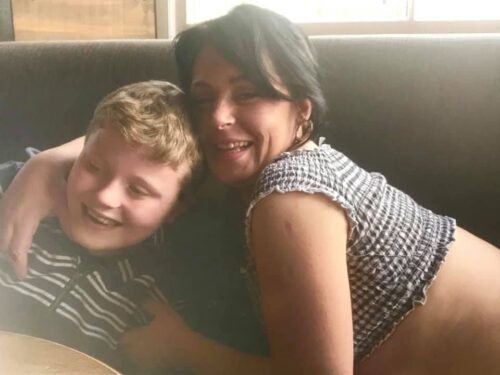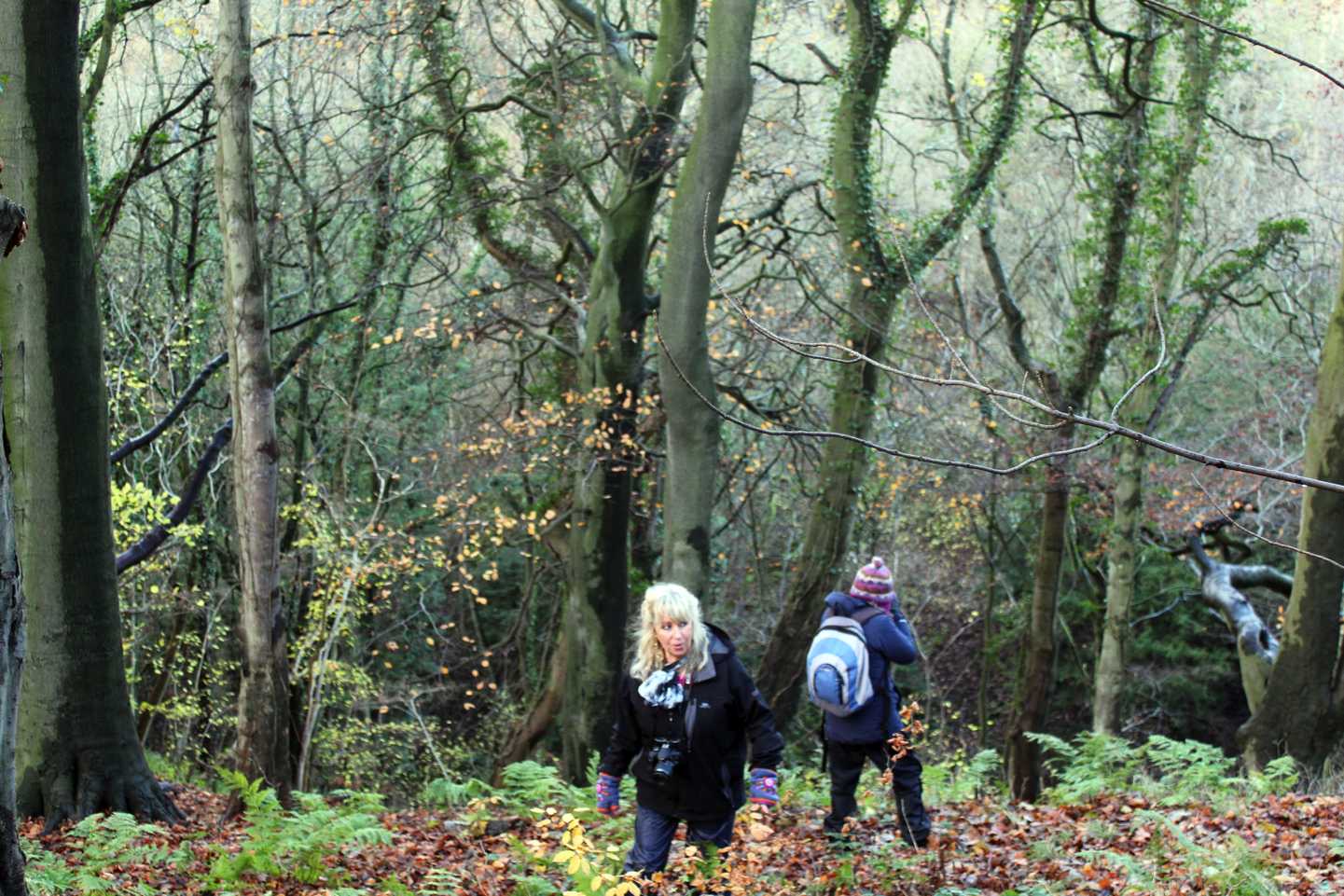One year to the day since the famous and iconic Sycamore Gap tree was cruelly cut down in an “act of violence against Mother Nature itself”, there is a sign of hope that nature could bounce back. The parallels with vulnerable women finding hope and recovery from being subjected to the worst possible adversity, and discovering healing and new beginnings are clear.
On 27th September 2024 the National Trust announced the “Trees of Hope” project, which would see 49 saplings from the Tree allocated to nationwide projects and planted as a symbol of hope and healing. On the same day, Tina’s Haven Nature Reserve was announced as being the recipient of one of these saplings. It will grow amongst 21500 other trees being planted to create a unique location for women to visit as a place of reflection, recovery and a connection with nature, giving hope for women like Tina Robson, who are faced with a life of trauma-based addiction.
Tina Robson died in July 2020 after losing a battle against trauma-based addiction, which was first triggered in childhood when Tina was separated from her close family by her father’s residency order, and continued into adulthood when her addiction problems led to Tina being periodically separated from her son Vinnie.
Ison Harrison represented Tina’s family at the Inquest into her death and has closely followed the subsequent campaigning of Tina’s mother, Dr Sue Robson, who has tirelessly sought improvements to the care of women experiencing trauma-based addiction. One of the ways in which Sue found she could make a direct and tangible difference to people’s lives was in creating a space where vulnerable women could retreat, and benefit from a safe place of hope and recovery.
A nature-based programme to enhance women’s recovery from addiction and trauma
Sue created Tina’s Haven as an arts and nature-based programme that enhances women’s recovery from addiction and trauma, and now has partnered with the National Trust to create a beautiful and natural space for reflection and recovery. Based at Easington on the County Durham coast, ‘Tina’s Haven’ is 34 hectares (84 acres) of coastal fields set to become a landscape of rolling meadows, hedgerows, ponds and woodlands overlooking the North Sea, and a nature-filled sanctuary and a space for community-led activity. Now the sapling grown from a seed from the felled Sycamore Gap tree – located just 58 miles away in a distinctive dip in Hadrian’s Wall in Northumberland – will be planted in the space to signify hope, recovery, healings and new beginnings.
The National Trust has spent the last 40 years cleaning up the beaches that neighbour the former coalfield sites near to where Tina’s Haven will be situated, in an area blighted since the devastation of the mining industry, and which faces equally devastating everyday issues such as poverty, violence against women and girls (VAWG), addiction and child removal. By restoring the land, the aim is to help heal years of neglect to both nature and people. It is hoped that the green space will support women involved in the Tina’s Haven programme, while also reaching out to bring hope to others in some of the most deprived former mining areas of East Durham.
Tina was described as being “clearly a creative and sensitive person at a young age”. It was said that her warmth, intelligence and humour shone through in adulthood, despite her addiction and health troubles. Tina died aged just 35 years old, having struggled with drug and alcohol addiction for most of her adult life. When she was 23 years old Tina had a son, Vinnie, who remained in the guardianship of his maternal family when he was born to prevent him being adopted. Despite these difficult circumstances, their maternal bond remained strong, something from which Tina drew great strength, but also something many children and mothers like Vinnie and Tina wouldn’t have the same opportunity to experience.
Building female friendships and reconnecting women with each other and themselves
Two years after Tina’s passing Sue began working with ‘The Barn’ at Easington, ‘Addictions North-East’ and the ‘Own My Life’ course to develop a model holistic practice for birthmothers severed from their children, to enhance their recovery and healing from addiction, VAWG and trauma. The Tina’s Haven programme is an arts and nature-based model, focused on a combination of creative, nature-based practices such as forest bathing, growing, re-wilding, food production and traditional crafts such as weaving. Tina’s Haven is rooted in methods that build female friendship and trust by connecting women to the land, connecting women with each other and ultimately re-connecting women with themselves. The beauty of the Tina’s Haven model is that it is transferable to other recovery and arts and nature-based settings, something Sue is hoping to develop.
One of the most profound and empowering moments Sue experienced when mourning the devastating loss of her daughter, came when hearing the concluding comments at the inquest into Tina’s death (7th July 2022), when Assistant Coroner Karin Walsh stated: “Sue holds a firm belief that society should provide a better system for dealing with young women with issues such as Tina. That may be a very appropriate belief to hold but the person with issues needs to be willing to engage.”
Speaking recently, Sue commented on the impact of that statement: “Since Tina’s traumatic childhood, I had heard the mantra ‘she doesn’t engage’ from almost all the state-funded agencies assigned to work with her; and it followed her beyond her death. Since then, I have worked tirelessly to evidence that if services are designed with women at the centre, and on their terms; they will engage.”
Tina’s Haven is the result of that belief. Commenting more generally about the aims of Tina’s Haven, Sue continued:
“Some say that connection is the opposite of addiction. In Tina’s Haven, women find self-empowerment, solidarity with other women, increased well-being and a strong sense of spirituality from being immersed in nature, effectively connecting women’s recovery to the recovery of the land.
“The naming and development of Tina’s Haven by the National Trust as a natural space for reflection and recovery, positioned magnificently on the East Durham Coast, will help us engage the communities who live and work here, spreading our message of hope across and beyond the addiction recovery community.
“With the addition of one of the Sycamore Gap tree saplings as a highly significant symbol of hope for East Durham, this project recognises that even after being subject to the worst adversity and acts of violence, there can be recovery, healing and new beginnings; and hope can grow in abundance.”
Parallels between nature and vulnerable women
Sue made pilgrimages to the Sycamore Gap tree to help with her grieving in the months and years after Tina’s passing, and like millions of others was overwhelmed with anger, helplessness and despair at seeing it being chopped down in an act she describes as “violence against mother nature itself”.
“When Tina died, my hope died with her,” Sue says. “And equally, when that beautiful tree was cut down, it was a violent, devastating act.”
But there is now a hope that nature can recover and re-connect, just as vulnerable and affected women can bounce back from the worst adversity, and in parallel with nature can heal and recover too. When Tina died, her then 11-year-old son Vinnie asked Sue to create a permanent monument in memory of his mum. The ‘Tina’s Haven Nature Reserve’ is such a place and with the aim of preventing other women and mothers needlessly dying at a young age, it is a legacy to be proud of and which will live forever.


















